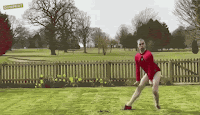The history of Italian cinema began a few months after the Lumière brothers began motion picture exhibitions.The first Italian director is considered to be Vittorio Calcina, a collaborator of the Lumière Brothers, who filmed Pope Leo XIII in 1896. The first films were made in the main cities of the Italian peninsula. These brief experiments immediately met the curiosity of the general public, encouraging operators to produce new films and laying the foundation for a true film industry. In the early 20th century, silent cinema developed, bringing numerous Italian stars to the forefront

















































